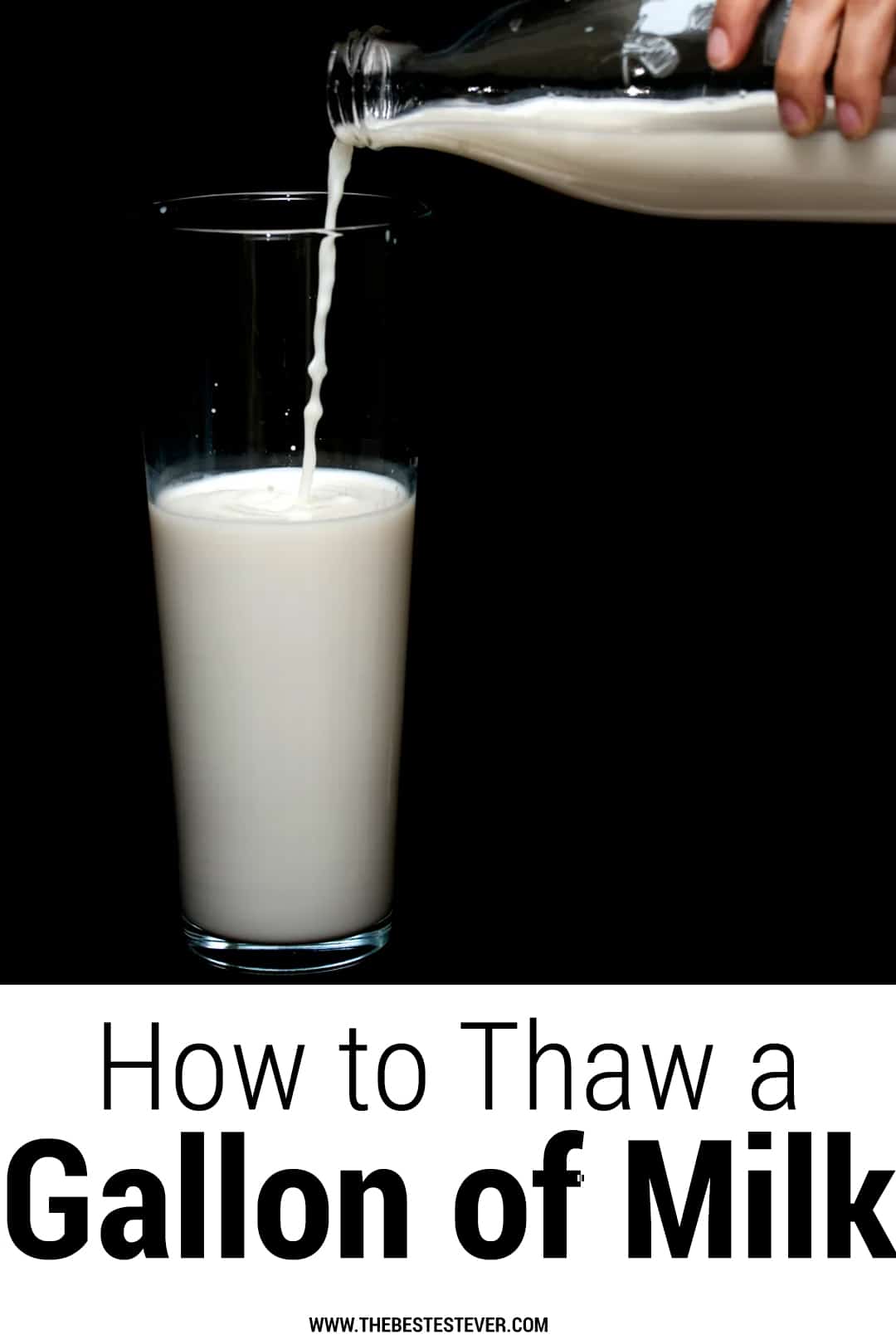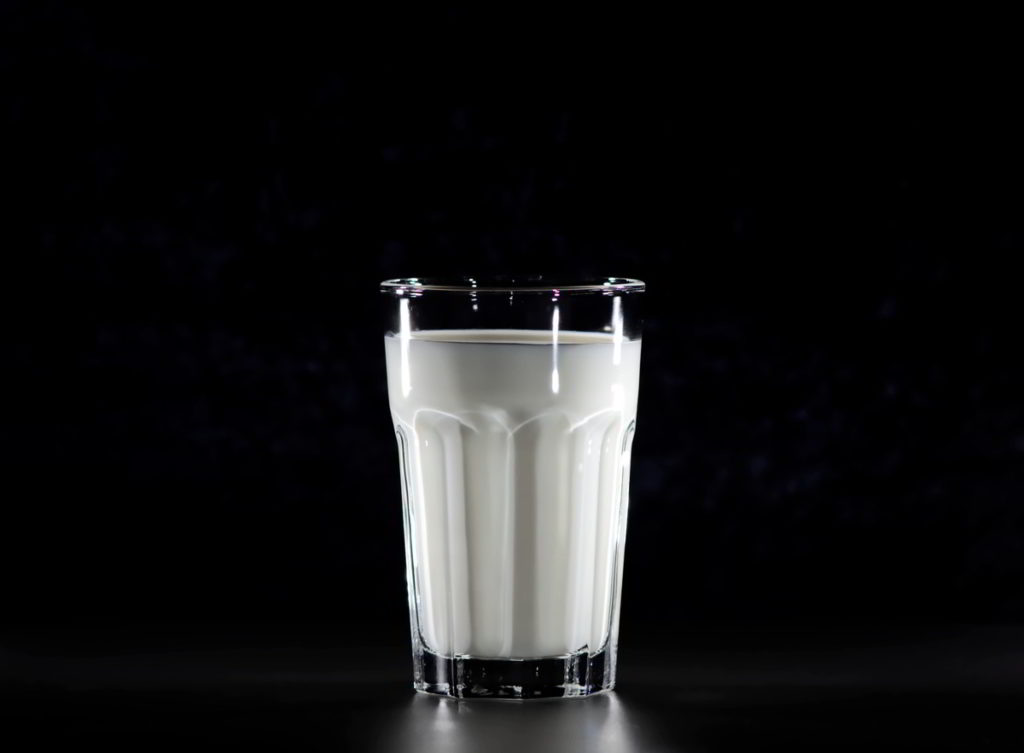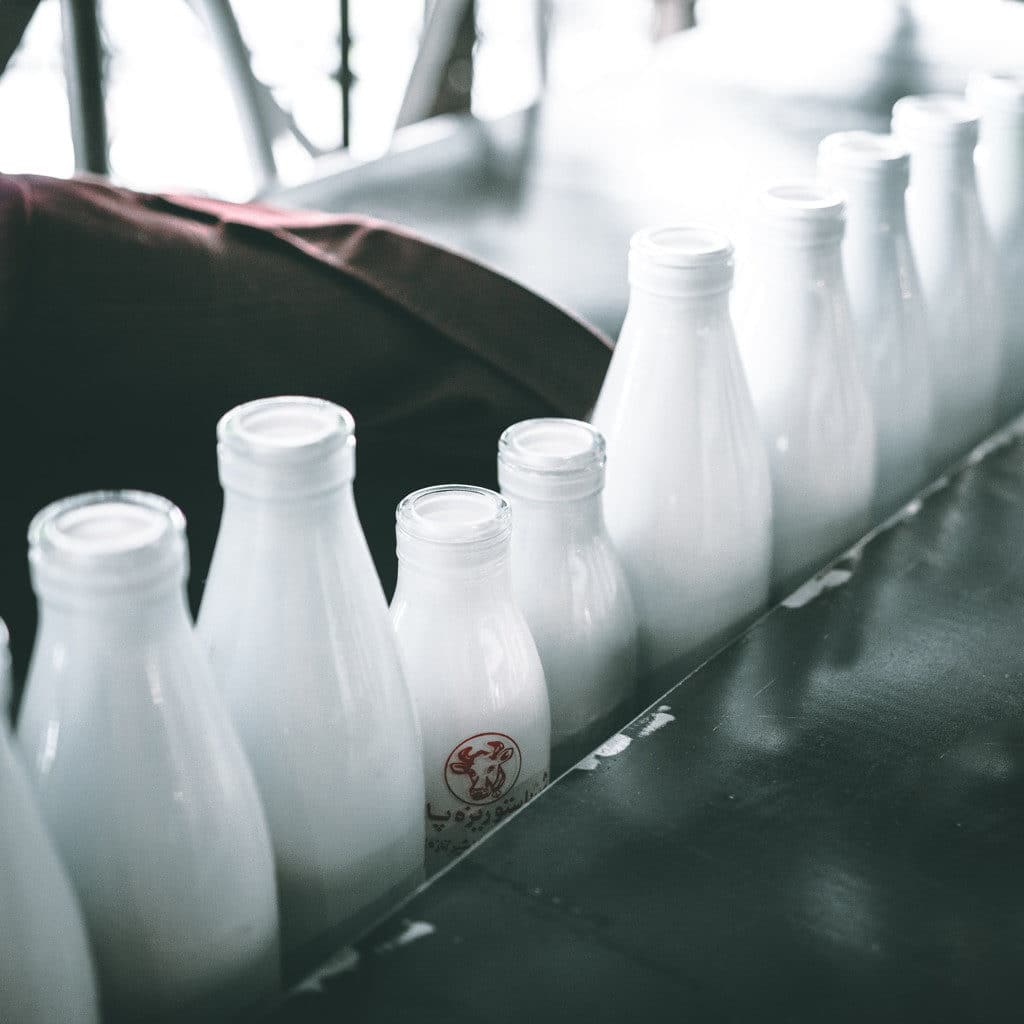
If you like to save money, it is always a good idea to buy extra gallons of milk when they are on sale.
Frozen milk holds up really well in the freezer and can be stored for up to 3 months, with no real change to its taste.
If you have a gallon of milk sitting in the freezer and you are ready to use it, you are probably wondering what is the best way to defrost it.
This article will look at the different ways to thaw a gallon of milk, how to do it properly and what is the best method to use if you need it done quickly.
How to Safely Thaw a Gallon of Milk

Before thawing your frozen milk, there are a couple of important things that you need to be aware of, especially if you want to do it safely and correctly.
Thaw Properly: Harmful Bacteria Lurks
It is important to thaw milk properly, as there is an increased chance of the growth of food borne bacteria if done incorrectly.
Most people will think that they can take the frozen milk and let it sit on the countertop till it is fully thawed out, but this significantly increases the chance of the milk harboring harmful bacteria.
According to the U.S Dairy, milk is pasteurized to kill bacteria that could potentially cause health risks. Even so, it is not safe to leave pasteurized milk unrefrigerated for an extended time.
Being exposed to warmer temperatures, could encourage the growth of harmful bacteria as the milk reaches the ‘Danger Zone’
The Danger Zone, According to the United States Department of Agriculture (USDA), is the range of temperatures 40 ° and 140 °F, where bacteria multiplies and grows quickly.
The rapid growth of harmful bacteria in the milk, opens up the possibility of bacterial food poisoning occurring.
This is why it is extremely important to follow the recommended thawing options (discussed below), especially if you are planning on serving the milk to children or the elderly.
Change in Texture
When milk thaws it is possible that the look and texture could be altered as a result of freezing.
Typically, you will notice that the frozen milk will have a yellowish hue. This is due to the riboflavin separating from the other ingredients.
This is normal and the color will disappear once the milk is given a vigorous shake.
The texture might be a bit off, especially in whole milk as fat separation may occur. This can be fixed, by shaking the milk to reconstitute it.
The texture change will be less noticeable in skim or low-fat varieties of milk as they contain less fat.
Best Ways to Thaw a Gallon of Milk

When you are ready to use your frozen milk, you have two available options.
You can let the gallon of milk sit in the refrigerator overnight or place it in a cold-water bath.
We will take a detailed look at each method below, highlighting the pros and cons of each.
Overnight in the Refrigerator: The Recommended Defrosting Method
Letting the milk sit overnight in the refrigerator is the best option available when you are looking to safely defrost milk.
Steps:
- Place the gallon of milk to thaw in the refrigerator the night before you plan on using it. The milk can take up to a day for the milk to fully defrost, so give yourself ample time.
- If it is still a bit frozen after leaving it in the refrigerator overnight, then you can take it out and place it in a cold-water bath to let it fully thaw out (We examine that in the next section).
Pros: Milk will thaw without worrying about the growth of harmful bacteria.
Cons: Takes a long time for the milk to thaw, not recommended if you need it quickly.

Cold Water Bath: The Quickest Way to Thaw a Gallon of Milk
If you are looking to defrost milk quickly, then the cold water bath method is the best option.
Steps:
- Fill a large container or kitchen sink with cold water.
- Place the frozen gallon of milk into the container/sink of cold water to defrost.
- Let the milk to sit for about 30 minutes in the cold water bath. Check to see if the milk is thawed to your liking. If there are still ice chunks, replace the water with new cold water and let it sit for another 15-20 minutes (depending on the thickness of the ice chunks).
- Once thawed, shake and store in the refrigerator.
Pros: Quick method to defrost, can take 30 minutes to an hour, compared to hours sitting in the refrigerator.
Cons: If left out for hours and the water gets too warm, this method can promote the growth of harmful bacteria.
Wrapping it up
If you have a gallon of milk in the freezer and want it thawed, you have a couple of options available.
You can either place in the refrigerator overnight to defrost or let it sit in a cold water bath.
Each method is effective at getting a gallon of milk thawed safely, once the proper instructions are followed.
I have tried to thaw frozen milk in the refrigerator and it has taken several days for the ice chunks to melt.